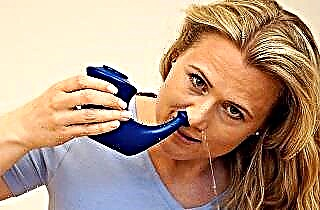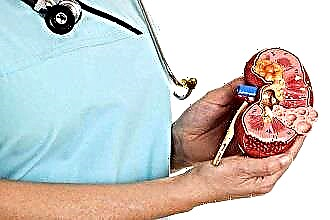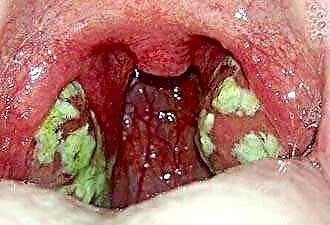In a healthy person, snot does not constantly flow. They can appear with a cold, as a symptom of an allergic reaction or from exposure to external stimuli. They usually have a liquid consistency, whitish in color. A change in the color of the snot can be a signal that certain problems have arisen in the body that are worth paying attention to. For example, orange snot from an adult's nose can be a symptom of acute sinusitis.
How orange coloration appears
 Orange snot is a very general concept. In fact, their shade can vary from yellow-orange to dark brown, and a good specialist can make a preliminary diagnosis by the intensity of the color. What can cause a change in the color of mucous discharge from the nose? Here are some of the main reasons:
Orange snot is a very general concept. In fact, their shade can vary from yellow-orange to dark brown, and a good specialist can make a preliminary diagnosis by the intensity of the color. What can cause a change in the color of mucous discharge from the nose? Here are some of the main reasons:
- Damage to capillaries. These are very small blood vessels with thin walls. They can burst with careless cleaning of the nose, a sharp rise in blood pressure, drying out of the mucous membrane, and even very strong sneezing. In this case, orange snot has a brown tint and bloody blotches, and they appear from time to time, irregularly.
- Purulent inflammation of the sinuses caused by the pathogenic effect of microorganisms. It is usually indicated by bright orange snot or yellow-orange snot. It requires urgent intensive treatment with broad-spectrum antibiotics. Otherwise, very serious complications can arise. Often additional symptoms are shortness of breath, headaches, a feeling of "fullness" of the sinuses. An increase in body temperature is possible.
- Thinning and atrophic changes in the nasal mucosa due to smoking, taking narcotic drugs, constantly being in a room with dry air, working in "hot" workshops or in hazardous industries. These people usually have orange snot in the morning. They are viscous and may contain small clots of blood. Ignoring the symptom can cause cracks and sores on the nasal mucosa, its erosion and chronic inflammation.
In order to accurately diagnose, in most cases, only external examination is completely insufficient. Usually, the doctor prescribes several laboratory tests to accurately determine the reason why the orange snot appeared in an adult, and to choose the right treatment.
Treatment methods
 If the results of the tests, which the orange snot were exposed to, showed that this is a purulent inflammation of the maxillary or frontal sinuses, the patient may even be offered a hospitalization. It all depends on the severity of the condition and the individual characteristics of the course of the disease. With significant accumulations of pus, there is a danger of infection of the meninges and the development of sepsis. Therefore, sometimes it is necessary to make punctures through which the contents of the sinuses come out, quickly relieving the patient's condition.
If the results of the tests, which the orange snot were exposed to, showed that this is a purulent inflammation of the maxillary or frontal sinuses, the patient may even be offered a hospitalization. It all depends on the severity of the condition and the individual characteristics of the course of the disease. With significant accumulations of pus, there is a danger of infection of the meninges and the development of sepsis. Therefore, sometimes it is necessary to make punctures through which the contents of the sinuses come out, quickly relieving the patient's condition.
Many are afraid of this manipulation, as they believe that an infection will penetrate through the puncture site and the inflammation will turn into a chronic stage. In fact, the opposite is true. The infection will spread faster if it has no way out.
The puncture heals completely after 48 hours, and closes after 6-7, since the cells of the mucous membrane regenerate several times faster than ordinary ones.
When there is little purulent discharge, a combination of drug and physiotherapy treatment is quite enough. The following groups of drugs are usually prescribed:
 anti-inflammatory - to relieve irritation of the mucous membranes of the nose and throat;
anti-inflammatory - to relieve irritation of the mucous membranes of the nose and throat;- antibacterial - to destroy pathogenic microflora;
- antipyretic - for a short time, with a strong increase in temperature;
- antihistamines - to relieve puffiness.
Traditional methods of treatment can be used only in consultation with a doctor. Although rinsing the nose with a solution of furacilin or iodine-saline will not hurt in any case. On the contrary, it will reduce the number of pathogenic bacteria in the nasal cavity and significantly speed up recovery. Even if orange snot comes out from one nostril, then both should be flushed so that the infection does not spread to the other side of the nose.
Prevention methods
Elementary protective measures, which must be performed regularly, without waiting for the onset of the disease, will significantly reduce the likelihood of developing inflammatory processes in the upper respiratory tract:
- at the first sign of a cold, take antiviral drugs;
- prevent severe hypothermia of the body;
 humidify rooms with working heating devices;
humidify rooms with working heating devices;- be sure to ventilate the bedroom well before going to bed;
- control the level of blood pressure, especially if there is a tendency to increase it;
- when working in hazardous industries, use personal protective equipment;
- Rinse the nostrils 2-3 times a week with clean running water or saline;
- during the period of mass spread of infections transmitted by airborne droplets, lubricate the nose with petroleum jelly or oxolinic ointment;
- take measures to improve immunity: drink multivitamin preparations and immunomodulators, play sports, eat normally, walk in the fresh air.
Naturally, it is better to completely abandon bad habits. Especially from smoking, which greatly dries out the nasal mucosa, provokes erosion and ulceration on it.
If orange snot continues to appear regularly, it is better not to delay the visit to the doctor. In the early stages, diseases such as sinusitis are cured quickly enough. But, having passed into a chronic form, they can worsen throughout life.

 anti-inflammatory - to relieve irritation of the mucous membranes of the nose and throat;
anti-inflammatory - to relieve irritation of the mucous membranes of the nose and throat; humidify rooms with working heating devices;
humidify rooms with working heating devices;

